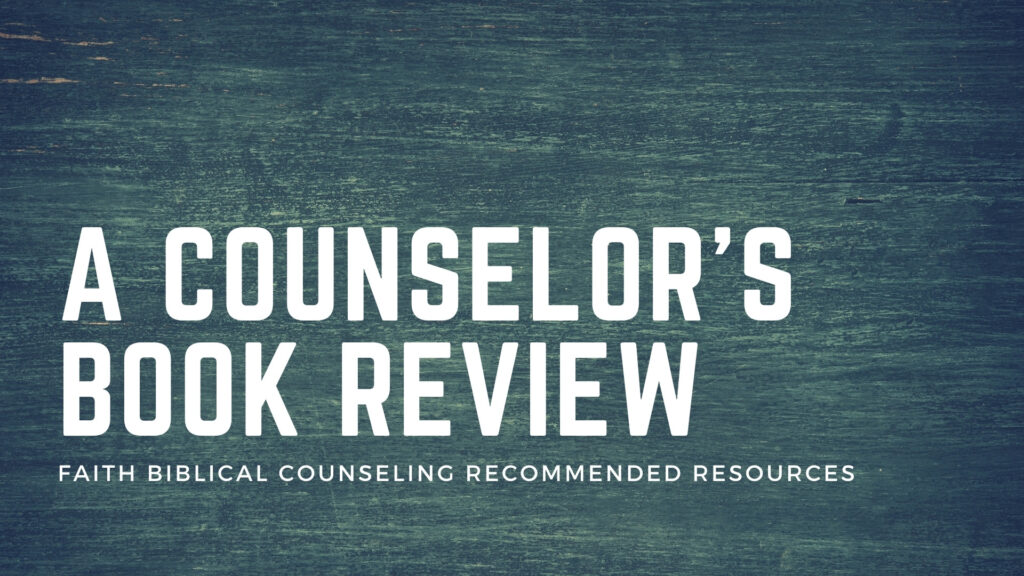
We know that when we sit across from our counselees, there is far more behind the scenes than just the presenting issues. There is frequently a complex web of beliefs and experiences that lead our counselees to view life and to respond to situations the way they do. If we are not careful, it is easy for us to compress our counselees and see them two-dimensionally – only in the ways that they suffer or only in their sinful responses. Doing so will keep us from responding to the depths of their experiences and from helping them reorient their lives around God’s Word. In Saints, Sufferers, and Sinners: Loving Others As God Loves Us by Michael R. Emlet, the author lays out a framework to understand the people we encounter in life more robustly and enables us to apply more skillfully the healing balm of the Word where they need it the most. He encourages us to see our counselees as saints, sufferers, and sinners.
The author divided the book into five parts. “Part 1: Understanding People” is an introduction to the book and makes a case for why we should see people as saints, sufferers, and sinners. Parts 2-4 follow a consistent framework for each facet of the individual – saint, suffer, and sinner. Part 2 addresses how to love others as saints by showing us how Scripture speaks to saints (ch 4), how God  loves us as saints (ch 5), ministry priorities for loving saints (ch 6), how we love saints in everyday life and in counseling specifically (ch 7-8), and the barriers we face to loving others as saints (ch 9). Parts 3 and 4 work through those same topics but look through the lens of seeing others as sufferers and then as sinners. Finally, part 5 concludes with a call to balance in ministry. When we get out of balance, we can give incomplete counsel and miss the whole person. This portion of the book helps us identify when we may be doing that.
loves us as saints (ch 5), ministry priorities for loving saints (ch 6), how we love saints in everyday life and in counseling specifically (ch 7-8), and the barriers we face to loving others as saints (ch 9). Parts 3 and 4 work through those same topics but look through the lens of seeing others as sufferers and then as sinners. Finally, part 5 concludes with a call to balance in ministry. When we get out of balance, we can give incomplete counsel and miss the whole person. This portion of the book helps us identify when we may be doing that.
The saint, sufferer, sinner framework helps us as we consider how to help our counselee. God sees and cares for his people in each of these roles. Emlet describes every Christian using these three categories:
- Saints who need confirmation of their identity as children of God,
- Sufferers who need comfort in the midst of their affliction, and
- Sinners who need challenge to their sin in light of God’s redemptive mercies.
(p. 13 emphasis original)
These categories are true for every believer. However, the author does acknowledge that it is not true for unbelievers. While unbelievers do not have their identity as saints, they are still image-bearers of God, and so we can speak to their identity from a Biblical perspective in that way.
This book was written for the counselor. Its primary purpose is to prepare the counselor to think about their counselee as a whole person and to develop a framework to help them do so consistently. The author helps the counselor understand the counselee’s significance in each of these roles, and he warns us of the missteps we may make if we get these roles out of balance. Emlet offers these roles as a framework for us to see our counselees, but he also offers it as a plan for counseling. He encourages us to work through the roles of saint, sufferer, and sinner in that order (in most cases – he talks about exceptions to the plan as well). Our counselees need to see their identity in Christ, know that we (and more importantly) Christ care and have compassion for their suffering, and then speak truth into their patterns of sin.
This book could help create a framework to lead your counselees through. For example, you could utilize the saints, sufferers, and sinners paradigm to address each of these areas in your counselee systematically. While you may incorporate these naturally into your counseling, Emlet has some thoughtful input for how to do it well. Additionally, we can get out of balance when we or our counselees overemphasize one of these roles. The author gives us some helpful diagnostics in chapter 26 to help us diagnose if we are overemphasizing one of these roles.
While the book’s intended audience is counselors, this is a helpful framework for any ministry interaction. The phrase “hurting people hurt people” is a useful reminder that sometimes people lash out because they were hurt by something else. It encapsulates the relationship between sufferer and sinner. The benefit of being aware of that relationship goes far beyond the counseling relationship. This is a helpful principle to teach a counselee struggling with relationships in many different areas of life.
 Biblical Counseling
Biblical Counseling